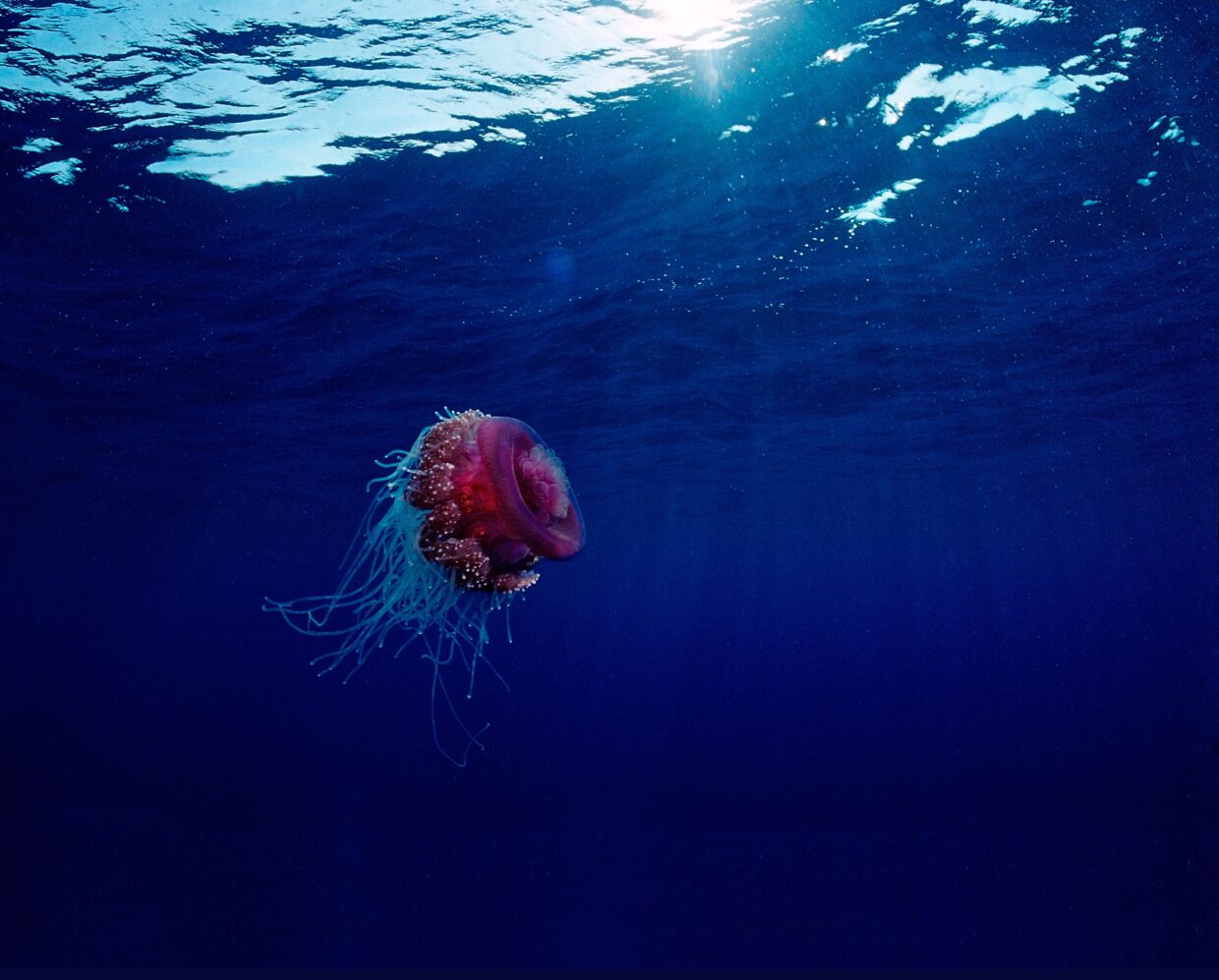In a remarkable archaeological revelation, scientists have uncovered a fascinating relic from the depths of time – the oldest known jellyfish fossil, a prehistoric masterpiece that has remained hidden for more than half a billion years. This astounding discovery comes from the heart of the Canadian Rockies, nestled within the Burgess Shale, a site renowned for its exceptional preservation of ancient life forms. Dating back an astonishing 505 million years, this fossil provides a captivating window into the ancient oceans and the enigmatic creature that once roamed them.

Burgessomedusa phasmiformis: A Predatory Dance of Tentacles
Meet Burgessomedusa phasmiformis, a free-swimming predatory jellyfish that once prowled the ancient seas. This astonishing find, meticulously preserved within the Burgess Shale, offers a tantalizing glimpse into the past. What makes this discovery truly captivating is its portrayal of the jellyfish's remarkable hunting prowess. The fossil vividly captures the moment when the Burgessomedusa seized its prey using its intricate and formidable tentacles, showcasing a dance of predation that transcends time.
Echoes of Myth and Evolution: Unveiling the Medusozoans
Burgessomedusa belongs to an illustrious lineage known as medusozoans, a group named after the mythical Gorgon, Medusa, famed for her snake-like hair. These ancient creatures, composed of an astonishing 95% water, share a kinship with modern-day species like box jellyfish, hydroids, stalked jellyfish, and the iconic "true" jellyfish. As members of the esteemed Cnidaria family, which includes sea anemones and corals, medusozoans are an integral part of Earth's ancient tapestry.

Bridging Eons: A Glimpse into Prehistoric Ecosystems
The Burgessomedusa discovery serves as a portal through time, transporting us over 500 million years into the past. It unveils the existence of large, bell-shaped or saucer-bodied jellyfish that had already mastered the art of swimming in the ancient oceans. This revelation adds layers of complexity to our understanding of the Cambrian food chain. Notably, predation was not confined solely to colossal swimming arthropods like the enigmatic Anomalocaris, another denizen of the Burgess Shale.
Preserved Whispers from the Depths: Unmasking the Fossil Record
Nestled within the Yoho and Kootenay National Parks of southwestern Canada, the Burgess Shale fossil site is a veritable treasure trove of ancient life. Its significance extends beyond the Burgessomedusa find, as it harbours a collection of exquisitely preserved fossils that tell tales of eons past. This UNESCO World Heritage Site, anointed in 1980, stands as a testament to the fragility of time and the tenacity of ancient organisms to leave their mark.
The Royal Ontario Museum: Guardians of the Past
The esteemed Royal Ontario Museum (ROM) stands as a custodian of this momentous discovery. With nearly 200 specimens gracing its halls, the ROM boasts a curated collection of Burgessomedusa fossils. These remnants, some exceeding 20 centimetres in length, unravel the intricate intricacies of internal anatomy and tentacle design. It is through the meticulous study of these specimens that researchers unequivocally identify Burgessomedusa as a medusozoan, deepening our connection to a prehistoric world.

Untangling the Threads of Evolution: Cnidarians and Their Enigmatic Journey
The enigmatic evolution of the free-swimming jellyfish, or medusa, has long puzzled scientists. The discovery of Burgessomedusa unveils yet another thread in this intricate narrative. Cnidarians, a diverse assembly of over 11,000 aquatic species, exhibit a complex life cycle with two distinctive body forms – the vase-like polyp and the saucer-shaped medusa. Despite the existence of fossilized polyps dating back 560 million years, the story of the free-swimming medusa remains veiled in mystery.
A Dance of Predation: Anomalocaris and Burgessomedusa
In the annals of the Burgess Shale's history, the predator-prey dynamic takes centre stage. Anomalocaris, the peculiar "abnormal shrimp," once reigned as a dominant predator. Now, Burgessomedusa steps onto the stage, revealing itself as an equally efficient swimming predator. Dr. Jean-Bernard Caron, co-author of the study and ROM's Richard Ivey Curator of Invertebrate Palaeontology underscores the complexity added to Cambrian food webs by these ancient predators.

Whispers in Stone: Deciphering Ancient Tales
Fossils of jellyfish are rarities that speak volumes despite their scarcity. While their evolutionary tale has been pieced together from microscopic larval stages and molecular investigations of extant species, Burgessomedusa's emergence provides tangible evidence of the past. These precious fossils now grace the Burgess Shale section of the newly inaugurated Willner Madge Gallery, Dawn of Life, at the ROM. Here, visitors can witness the ancient dance of Burgessomedusa, an awe-inspiring testament to the ebb and flow of life across the eons.
© Copyright 2023. All Rights Reserved Powered by Vygr Media.























